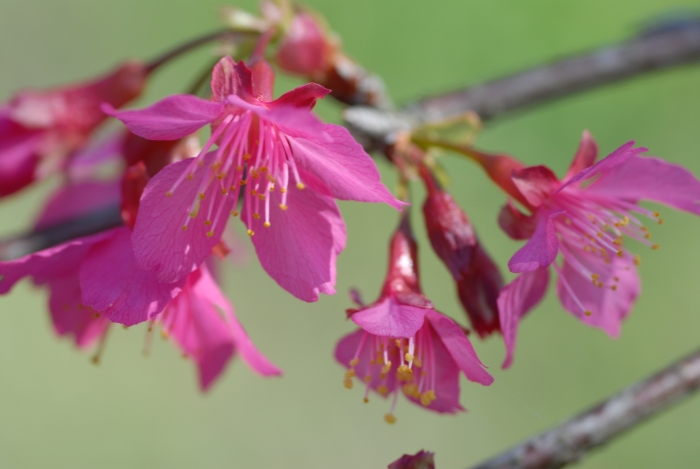Wild Himalayan Cherry
(Prunus cerasoides)
Wild Himalayan Cherry (Prunus cerasoides)
/
/

潘立傑
CC BY 4.0
Image By:
潘立傑
Recorded By:
Copyright:
CC BY 4.0
Copyright Notice:
Photo by: 潘立傑 | License Type: CC BY 4.0 | License URL: http://creativecommons.org/licenses/by/4.0/ | Rights Holder: 潘立傑 | Publisher: iNaturalist | Date Created: 2007-01-06T11:15:40-08:00 |
























Estimated Native Range
Summary
Prunus cerasoides, commonly known as the Wild Himalayan Cherry, is a deciduous tree that is part of the Rosaceae family. It is native to temperate mixed forests, often found on slopes and in valleys with well-drained soils in the Himalayan region, from Himachal Pradesh in north-central India to southwestern China, Burma, and Thailand. This species typically reaches up to 98 feet in height and is recognized by its glossy, ringed bark and long, dentate stipules. The Wild Himalayan Cherry is particularly noted for its beautiful pinkish-white hermaphroditic flowers that bloom profusely in autumn and again in spring, creating a spectacular display. The flowering season is a significant tourist attraction in regions like Uttarakhand, India, where the tree is revered and integrated into cultural practices.
The Wild Himalayan Cherry is valued for its ornamental beauty, especially during its flowering periods when the tree is covered in blossoms. It is used in landscape design for its aesthetic appeal and is also planted for its cultural significance in certain regions. In cultivation, it thrives in well-drained, moisture-retentive loamy soil and prefers sunny, sheltered locations. While it is generally easy to maintain, the tree is susceptible to honey fungus, which can be a significant problem. Additionally, the seeds require cold stratification to germinate successfully, which is a process of exposing seeds to cold temperatures to break dormancy before sowing.CC BY-SA 4.0
The Wild Himalayan Cherry is valued for its ornamental beauty, especially during its flowering periods when the tree is covered in blossoms. It is used in landscape design for its aesthetic appeal and is also planted for its cultural significance in certain regions. In cultivation, it thrives in well-drained, moisture-retentive loamy soil and prefers sunny, sheltered locations. While it is generally easy to maintain, the tree is susceptible to honey fungus, which can be a significant problem. Additionally, the seeds require cold stratification to germinate successfully, which is a process of exposing seeds to cold temperatures to break dormancy before sowing.CC BY-SA 4.0
Plant Description
- Plant Type: Tree
- Height: 30-50 feet
- Width: 15-20 feet
- Growth Rate: Moderate
- Flower Color: Pink
- Flowering Season: Spring
- Leaf Retention: Deciduous
Growth Requirements
- Sun: Full Sun
- Water: Medium
- Drainage: Medium
Common Uses
Bee Garden, Bird Garden, Butterfly Garden, Low Maintenance, Showy Flowers
Natural Habitat
Temperate mixed forests, often found on slopes and in valleys with well-drained soils
Other Names
Common Names: Gao Peng Ying Tao, Sour Cherry, Padam, Paija, Payon
Scientific Names: , Prunus cerasoides, Cerasus carmesina, Cerasus cerasoides, Cerasus cerasoides, Cerasus cerasoides var. rubea, Cerasus majestica, Cerasus pectinata, Cerasus pectinata var. glabra, Cerasus phoshia
GBIF Accepted Name: